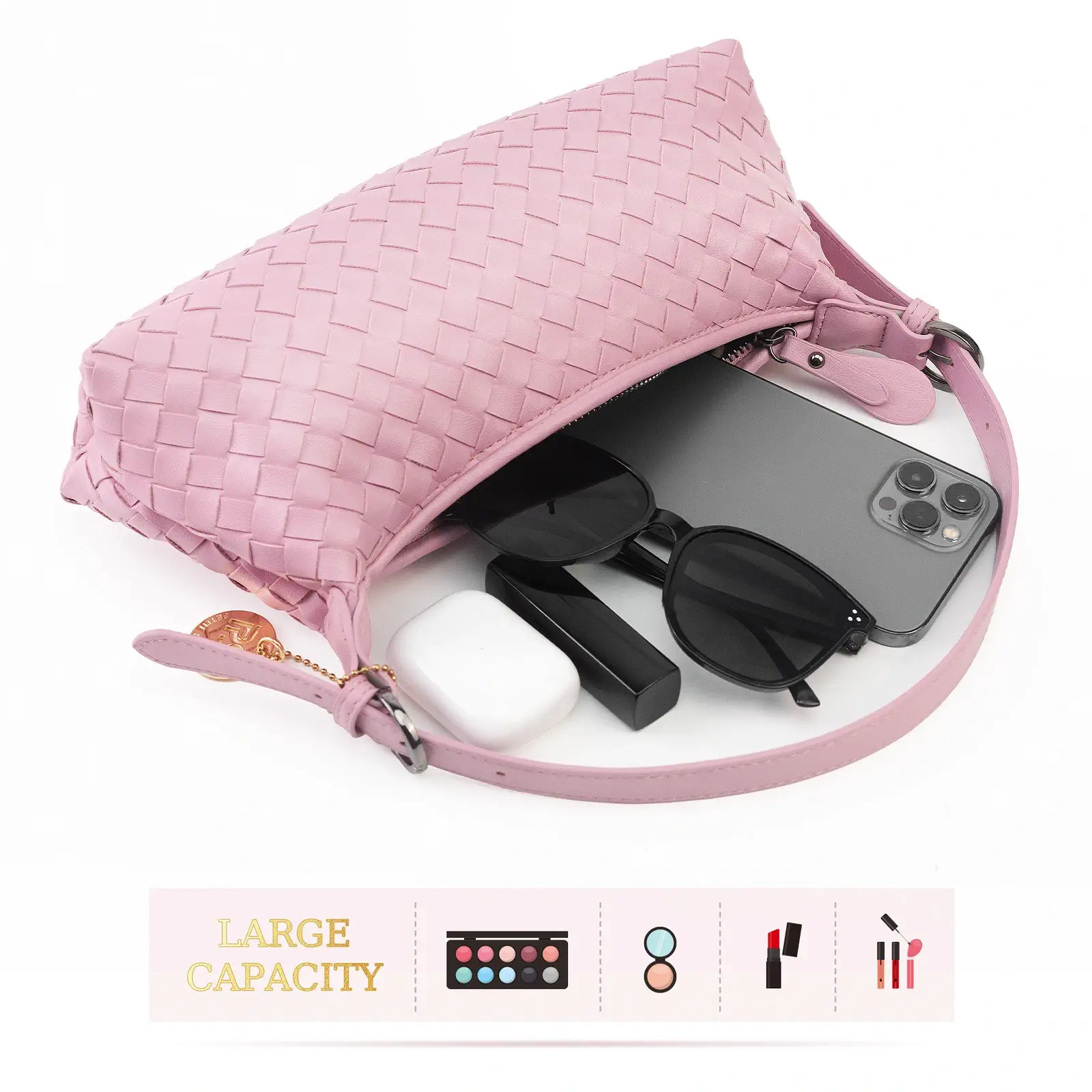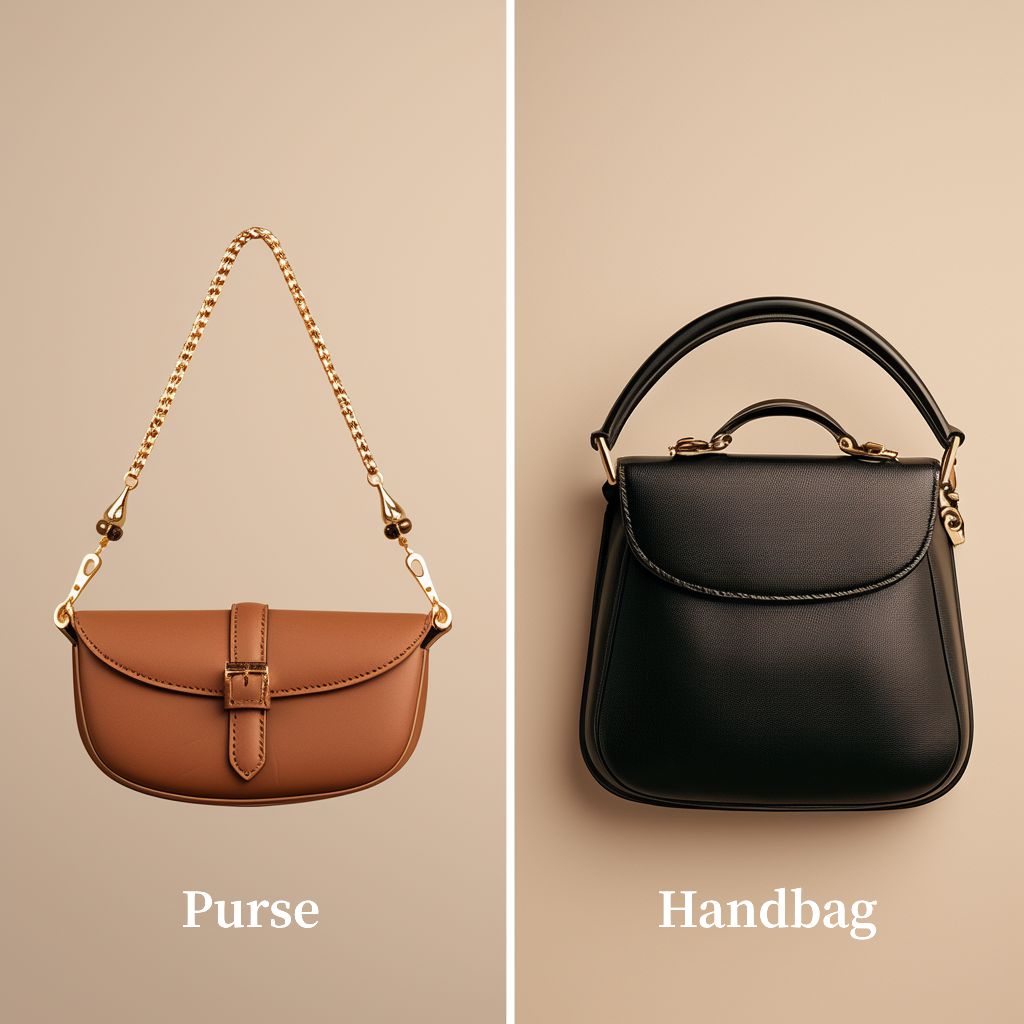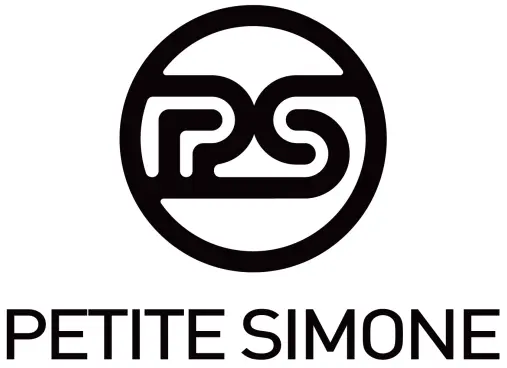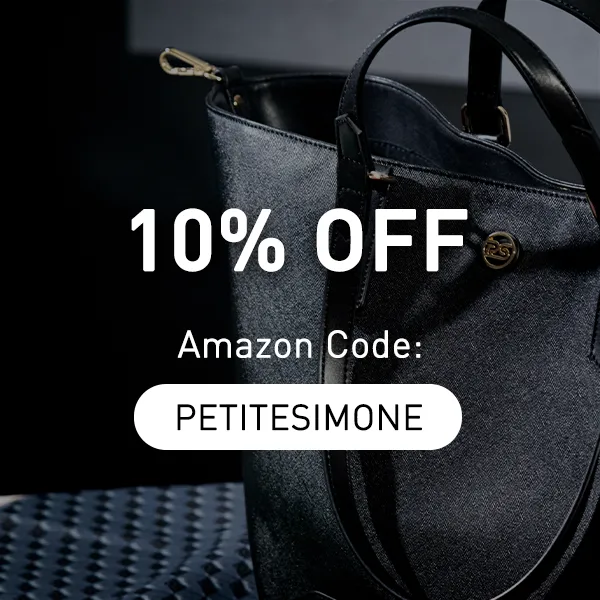HOME GUIDES SUSTAINABLE SATCHEL BRANDS: ECO-FRIENDLY LEATHER ALTERNATIVES
Sustainable Satchel Brands: Eco-Friendly Leather Alternatives
Written by Erin Sullivan
Introduction
1. The Rise of Sustainable Fashion
Sustainability has become a major trend in the fashion industry, driven by growing consumer awareness of environmental and ethical concerns. More shoppers are prioritizing eco-friendly products, especially as alternatives to traditional leather, which is criticized for its environmental and ethical impact.
2. Why Satchels?
Satchels are timeless accessories known for their style and practicality, making them a perfect opportunity to combine sustainability with fashion. As consumers seek ethical alternatives, eco-friendly satchels offer a stylish yet responsible choice without sacrificing quality.
3. Purpose of the Article
This article highlights brands leading the way in using eco-friendly leather alternatives for satchels. It will explore sustainable materials, ethical practices, and how consumers can make informed, eco-conscious fashion choices.
Related: The Ultimate Guide to Satchel Bags
The Problem with Traditional Leather
1. Environmental Impact
Traditional leather production has a significant environmental footprint. One of the primary issues is the deforestation caused by cattle farming, as vast areas of land are cleared to raise livestock. This not only contributes to habitat loss but also affects biodiversity. In addition, leather tanning processes often involve harmful chemicals, such as chromium, which can leach into water systems, causing pollution and affecting ecosystems.
Furthermore, leather production is energy-intensive and produces large quantities of greenhouse gases, making it a contributor to climate change. The water-intensive nature of cattle farming adds another layer of environmental strain, with large amounts of water used to raise cattle and in the leather tanning process.
2. Ethical Concerns
The ethical implications of traditional leather production are also a major point of concern. The leather industry is inherently linked to animal welfare issues, as it relies on the use of animal hides. Many consumers today are increasingly aware of the ethical treatment of animals and are seeking cruelty-free alternatives. Leather production often involves inhumane practices, including factory farming and the slaughter of animals for their hides.
As a result, there is a growing demand for alternatives that allow consumers to enjoy the benefits of leather-like products without supporting industries that exploit animals. This shift in consumer values has sparked a push for vegan and cruelty-free materials that are both ethical and sustainable.
Eco-Friendly Leather Alternatives
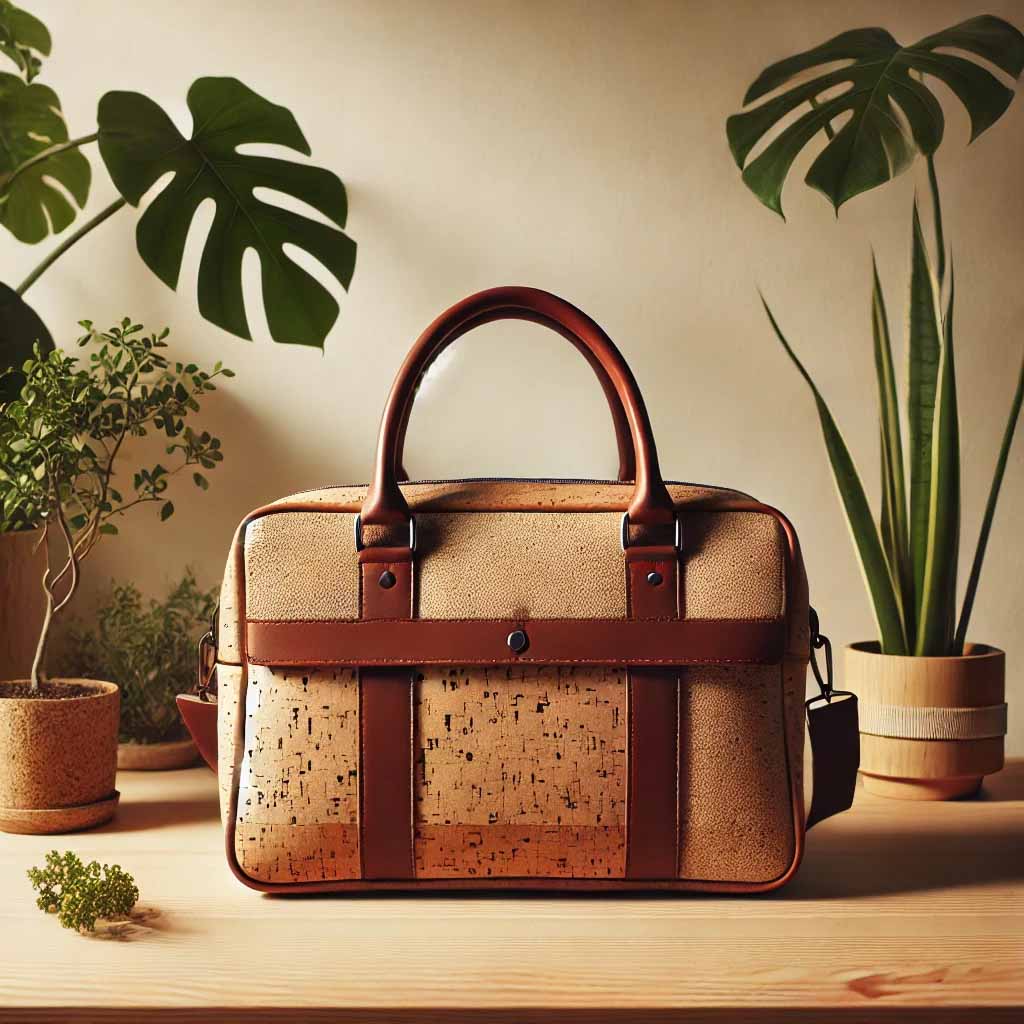
1. Plant-Based Materials
Cork Leather: Cork leather is made from the bark of cork oak trees, which naturally regenerate after harvesting, making it a renewable and sustainable material. It is durable, lightweight, water-resistant, and fully biodegradable, offering an eco-friendly alternative to traditional leather without sacrificing performance or style.
Piñatex (Pineapple Leaf Fiber): Piñatex is made from the fibers of pineapple leaves, a byproduct of the agricultural industry. It is a waste-to-resource innovation that provides a sustainable material for fashion items. This versatile material is strong, breathable, and can be used to create soft yet durable satchels and accessories.
Mushroom Leather (Mycelium): Mycelium, the root structure of mushrooms, can be grown in controlled environments to create a compostable, animal-free leather alternative. This lab-grown material is lightweight, customizable, and offers the flexibility of traditional leather, all while being biodegradable at the end of its life cycle.
2. Recycled and Upcycled Materials
Recycled Plastic: By transforming ocean waste and discarded plastic bottles into vegan "leather," brands are creating eco-friendly materials that help address pollution while providing durable, stylish alternatives to traditional leather. This process gives a second life to plastic waste, diverting it from landfills and the ocean.
Apple Leather: Apple leather is made from the leftover peels and cores of the apple juice industry, transforming food waste into a sustainable material. It is biodegradable and has a texture similar to traditional leather, making it a popular choice for eco-conscious brands.
3. Bio-Fabricated and Lab-Grown Leather
Modern Meadow's Zoa: Zoa is a bio-fabricated material made from collagen without using animals. It is produced through a process known as cellular agriculture, where cells are cultured to produce the proteins needed for leather-like products. This innovation reduces the need for animal farming and significantly lowers environmental impact.
VitroLabs: VitroLabs is leading the way in developing cultivated leather using cellular agriculture. Their process involves growing leather from animal cells without harming any animals. This lab-grown leather is customizable, scalable, and has the potential to revolutionize the fashion industry with a more sustainable and ethical alternative.
4. Natural Fiber Blends
Natural fibers like hemp, organic cotton, and jute are increasingly being used in combination with other sustainable materials to create durable and eco-friendly alternatives to leather. These fibers are biodegradable, require fewer pesticides and fertilizers to grow, and offer a sustainable solution for fashion brands looking to reduce their environmental impact. When blended with plant-based materials or used on their own, they create strong, versatile products that maintain their structure and appeal while supporting sustainability.
Leading Sustainable Satchel Brands
This section highlights some of the top brands that are leading the charge in creating eco-friendly satchels, showcasing their commitment to sustainability and innovative use of alternative materials.
1. Matt & Nat
Matt & Nat is a pioneer in the world of vegan leather, focusing on creating stylish, sustainable bags using recycled materials. Their commitment to environmental responsibility is evident in their use of materials like recycled plastic bottles and fabric, ensuring that each bag reduces waste while providing a durable and fashionable alternative to leather. Their satchel collections, known for their minimalist designs and timeless appeal, align with their core mission of creating eco-friendly fashion without compromising style or quality. Matt & Nat also prioritizes transparency in their supply chain, offering full disclosure on their materials and production processes.
2. Angela Roi
Angela Roi is a luxury brand known for its high-quality vegan satchels, certified by PETA for being cruelty-free. The brand uses premium alternatives to leather, including polyurethane (PU), which mimics the look and feel of real leather while being entirely animal-free. Angela Roi's commitment to sustainability extends beyond the materials used, as they also focus on ethical production practices. Their satchels are known for their elegant designs and durable construction, combining luxury with a commitment to both people and the planet. The brand offers a range of high-end, vegan satchels that make a statement while remaining environmentally conscious.
3. Corkor
Corkor is a unique brand that specializes in creating products made from cork leather, a renewable and biodegradable material derived from the bark of cork oak trees. Their satchels are lightweight, waterproof, and incredibly durable, showcasing the versatility of cork leather as an eco-friendly alternative to traditional leather. Corkor is dedicated to zero-waste production, ensuring that their bags are not only sustainable but also produced with minimal environmental impact. Their satchels are a testament to the potential of natural materials in high-quality fashion, offering an elegant, functional, and environmentally conscious option for consumers.
4. Stella McCartney
Stella McCartney has long been at the forefront of the sustainable fashion movement, and their commitment to using innovative materials continues with their satchel collections. The brand has embraced Mylo, a type of mushroom leather created from mycelium, which serves as a biodegradable, cruelty-free alternative to traditional leather. Stella McCartney's high-fashion satchels combine eco-ethics with luxurious design, proving that sustainability does not have to come at the expense of style. Their dedication to using sustainable materials and ethical practices sets a high standard in the luxury fashion industry.
5. Nae Vegan
Nae Vegan is a Portuguese brand committed to using sustainable materials like Piñatex (pineapple leaf fiber) and recycled PET in their satchel collections. Their focus is on creating affordable, durable bags that align with eco-conscious values. Nae Vegan's satchels are stylish and functional, featuring a range of designs that cater to both everyday use and special occasions. With an emphasis on sustainable sourcing and production, Nae Vegan demonstrates that eco-friendly fashion can be both affordable and high-quality.
How to Choose a Truly Sustainable Satchel
Choosing a truly sustainable satchel goes beyond simply opting for a vegan alternative to traditional leather. It involves considering various factors that reflect the brand's commitment to sustainability, ethical practices, and environmental impact. Here are key factors to guide your decision-making process:
1. Material Transparency
One of the most important considerations when choosing a sustainable satchel is the material used. Look for brands that are transparent about the materials they use and provide clear information about their sourcing and production processes. Certifications such as PETA-Approved Vegan, GOTS (Global Organic Textile Standard), and Fair Trade can help you identify brands that adhere to high sustainability and ethical standards. Transparent brands will provide details about the origin of their materials, whether they are plant-based, recycled, or bio-fabricated, and how these materials impact the environment. The more information available, the easier it is to make an informed choice.
2. Supply Chain Ethics
Sustainability is not just about materials; it's also about the entire supply chain. Brands that prioritize ethical production will openly share information about their manufacturing processes, factory conditions, and labor practices. Consider whether the brand is committed to ensuring fair wages, safe working conditions, and workers'rights throughout its supply chain. Supporting companies that value transparency and fairness in their production processes helps promote a more ethical fashion industry.
3. Durability vs. Disposability
Sustainability is closely tied to durability. A truly sustainable satchel is one that lasts for years, rather than one that will end up in a landfill after a season. When choosing a satchel, prioritize brands that offer high-quality craftsmanship and durable materials that stand the test of time. Avoid fast fashion trends that encourage disposable products. Instead, look for timeless designs and products made from materials that can withstand wear and tear, ensuring longevity and minimizing the need for frequent replacements.
4. End-of-Life Considerations
Another important aspect of sustainability is what happens to the satchel when it reaches the end of its useful life. Choose brands that consider the entire lifecycle of their products, including how they can be disposed of or recycled. Materials that are biodegradable or easily recyclable contribute to reducing landfill waste. Some brands even offer take-back programs where customers can return old bags for recycling or repurposing. This circular approach helps reduce waste and ensures that products have a minimal environmental impact throughout their lifecycle.
Challenges and Future Trends
While the shift towards sustainable satchels is exciting, there are several challenges that still need to be addressed. However, innovation in eco-friendly materials and practices shows great promise for the future of fashion. Let's explore the current limitations and the trends that are shaping the future of sustainable satchels.
1. Current Limitations
Cost Barriers for Innovative Materials: One of the primary challenges facing sustainable fashion, including eco-friendly satchels, is the cost of production. Materials like mushroom leather, Piñatex, and bio-fabricated options can be more expensive to produce than traditional leather. This often results in higher prices for consumers, making it more difficult for sustainable brands to compete with mass-market alternatives. As demand for sustainable products grows, there is hope that economies of scale will help drive costs down, but for now, pricing remains a barrier for many shoppers.
Scaling Production of Bio-Fabricated Leather: While lab-grown leathers and bio-fabricated materials hold incredible potential, scaling production to meet the demand for eco-friendly satchels remains a significant hurdle. Technologies like mycelium-based leather or collagen-based Zoa are still in the early stages of commercialization, and their production processes require substantial investment in infrastructure. Expanding these technologies to reach mainstream consumers will take time, but as innovation continues, these challenges are likely to be overcome.
2. Innovations on the Horizon
Advances in Lab-Grown Leather Technology: Lab-grown leather, including mycelium and cultured collagen-based materials, is on the cutting edge of sustainable fashion. These materials are produced without the need for animal farming, reducing the ecological footprint of leather production. As technology advances, the texture, durability, and affordability of lab-grown leathers are expected to improve, making them viable alternatives to traditional leather. This innovation holds the potential to revolutionize not just the satchel industry, but the entire fashion sector.
Circular Fashion Models: Another exciting trend in the sustainable fashion space is the rise of circular fashion models. Brands are beginning to implement take-back programs and recycling initiatives that allow consumers to return their used bags for refurbishment, recycling, or repurposing into new products. This model helps close the loop on production and consumption, reducing waste and promoting a more sustainable, long-term approach to fashion.
3. Consumer Role in Driving Change
The Power of Informed Purchasing Decisions: As consumers, we hold significant power in driving the sustainability movement forward. By choosing to support brands that prioritize eco-friendly materials, fair labor practices, and transparent supply chains, we can encourage companies to adopt more sustainable practices. As awareness of the environmental and ethical impacts of fashion grows, more consumers are making choices that align with their values, creating demand for sustainable satchels and other fashion products.
Supporting Brands That Prioritize Planet Over Profit: The future of sustainable fashion relies on consumer advocacy. When we support brands that are committed to both sustainability and ethical practices, we send a strong message that consumers are willing to pay a premium for products that benefit the environment and society. This shift in purchasing behavior can drive brands to make more substantial investments in sustainable practices and innovation, ultimately shaping a more sustainable fashion industry.
Conclusion
As the demand for more sustainable products continues to rise, the fashion industry is embracing new opportunities to innovate. Satchels, as timeless and functional accessories, provide an ideal platform for the integration of eco-friendly materials and practices. By choosing alternatives to traditional leather, consumers not only contribute to environmental preservation but also help to support ethical and cruelty-free practices.
Eco-friendly materials like cork leather, Piñatex, and lab-grown mycelium-based leathers are leading the way in reducing the negative environmental and ethical impacts of leather production. Brands that prioritize sustainability, such as Matt & Nat, Angela Roi, and Stella McCartney, are demonstrating that style, durability, and sustainability can coexist in the world of fashion.
However, challenges such as high production costs, limited scalability of new materials, and the need for greater consumer education remain. Despite these obstacles, the future looks promising. Advances in technology, along with a growing commitment from both brands and consumers to embrace sustainable practices, are paving the way for a more sustainable fashion industry.
Ultimately, choosing a truly sustainable satchel involves looking beyond just the material and considering the full lifecycle of the product—from production and labor practices to the end-of-life disposal options. As consumers become more informed and make choices that reflect their values, the shift toward a more sustainable and ethical fashion industry will only continue to grow.
Satchels, once seen as simple accessories, are now becoming symbols of conscious consumption, proving that fashion can be both beautiful and responsible. By supporting brands that prioritize sustainability, we can all play a role in shaping the future of fashion.

.webp)

